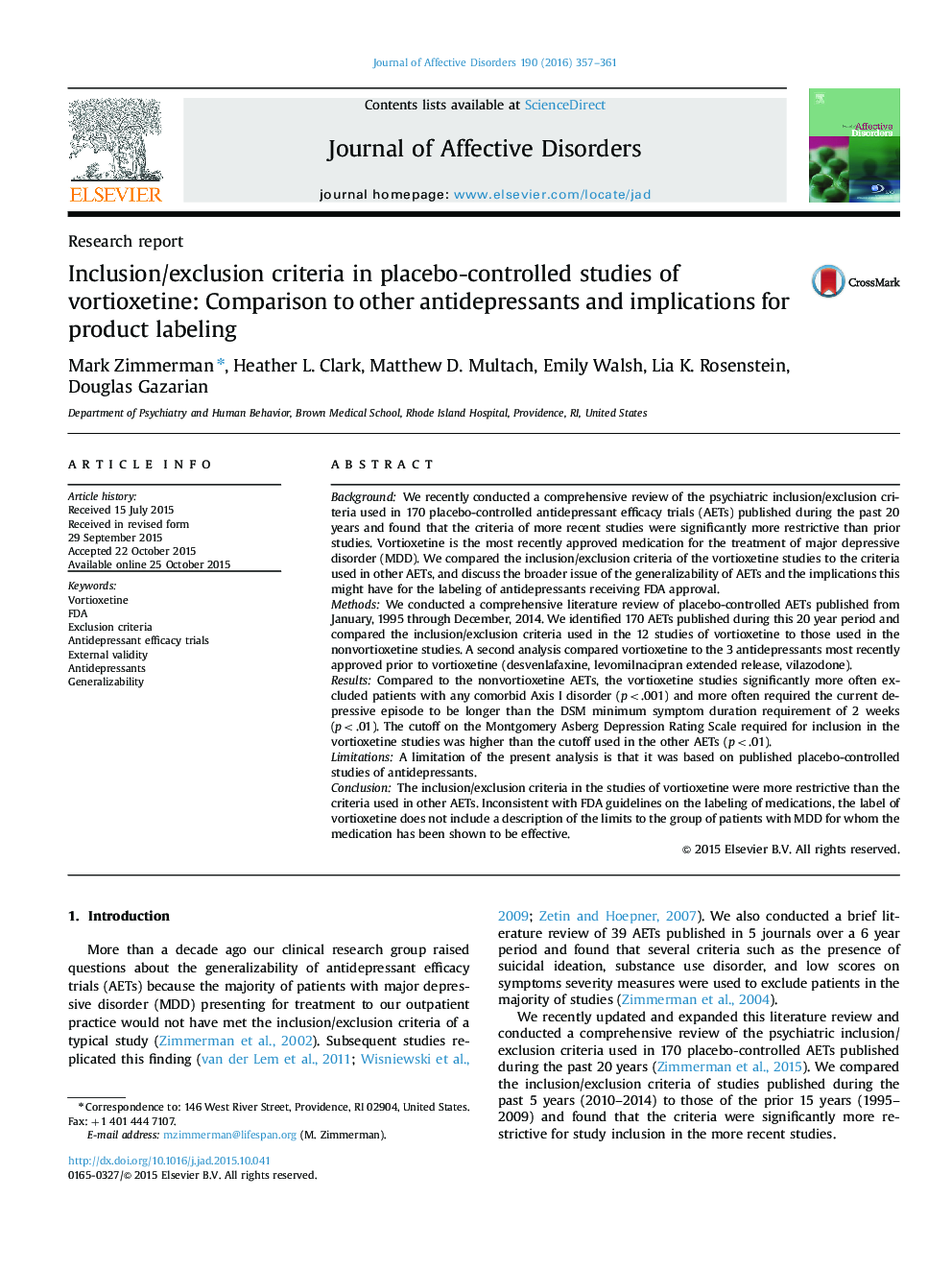| Article ID | Journal | Published Year | Pages | File Type |
|---|---|---|---|---|
| 6230735 | Journal of Affective Disorders | 2016 | 5 Pages |
â¢Vortioxetine is the most recently approved medication for the treatment of major depressive disorder (MDD).â¢The inclusion/exclusion criteria in the registration studies for vortioxetine were more restrictive than the criteria used in other AETs.â¢All studies of vortioxetine excluded patients with any comorbid psychiatric disorder, and the average severity of the patients was in the severe range.â¢Inconsistent with FDA guidelines on the labeling of medications, the label of vortioxetine does not include a description of the limits to the group of MDD patients for whom the medication has been shown to be effective.
BackgroundWe recently conducted a comprehensive review of the psychiatric inclusion/exclusion criteria used in 170 placebo-controlled antidepressant efficacy trials (AETs) published during the past 20 years and found that the criteria of more recent studies were significantly more restrictive than prior studies. Vortioxetine is the most recently approved medication for the treatment of major depressive disorder (MDD). We compared the inclusion/exclusion criteria of the vortioxetine studies to the criteria used in other AETs, and discuss the broader issue of the generalizability of AETs and the implications this might have for the labeling of antidepressants receiving FDA approval.MethodsWe conducted a comprehensive literature review of placebo-controlled AETs published from January, 1995 through December, 2014. We identified 170 AETs published during this 20 year period and compared the inclusion/exclusion criteria used in the 12 studies of vortioxetine to those used in the nonvortioxetine studies. A second analysis compared vortioxetine to the 3 antidepressants most recently approved prior to vortioxetine (desvenlafaxine, levomilnacipran extended release, vilazodone).ResultsCompared to the nonvortioxetine AETs, the vortioxetine studies significantly more often excluded patients with any comorbid Axis I disorder (p<.001) and more often required the current depressive episode to be longer than the DSM minimum symptom duration requirement of 2 weeks (p<.01). The cutoff on the Montgomery Asberg Depression Rating Scale required for inclusion in the vortioxetine studies was higher than the cutoff used in the other AETs (p<.01).LimitationsA limitation of the present analysis is that it was based on published placebo-controlled studies of antidepressants.ConclusionThe inclusion/exclusion criteria in the studies of vortioxetine were more restrictive than the criteria used in other AETs. Inconsistent with FDA guidelines on the labeling of medications, the label of vortioxetine does not include a description of the limits to the group of patients with MDD for whom the medication has been shown to be effective.
